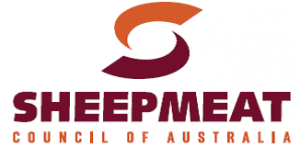 AUSTRALIA’S sheepmeat industry aims to deliver increased net industry income of $728 million by 2020 from a $55 million annual investment over the next five years in a strategic plan launched today.
AUSTRALIA’S sheepmeat industry aims to deliver increased net industry income of $728 million by 2020 from a $55 million annual investment over the next five years in a strategic plan launched today.
The Sheep Industry Strategic Plan 2015-2020 launched in Canberra has identified six critical outcomes, including:
– establishing value chain information systems to aid decision making and improve quality;
– reducing flock losses by lifting lamb marking rates by 5 percent and reducing ewe mortality by 1pc;
– defining a yearling product without compromising the lamb category;
– improving access for Australian sheepmeat to key global markets, with new opportunities valued at $61 million by 2020 and $334 by 2030;
– establishment of a collaborative sheep innovation entre to succeed the Sheep CRC in 2019, and;
– continuous improvement in product quality, by 2 MSA points by 2020 and 6 points by 2030 while maintaining or improving lean meat yield.
The SISP 2015-2020, with a focus on impacts out to 2030, was launched with the Meat Industry Strategic Plan 2015-2020 (MISP 2020) in Federal Parliament by Agriculture Minister Barnaby Joyce.
SISP modelling estimates that if all the activities of the MISP 2020 plan pertinent to the sheepmeat sector were undertaken at an annual investment of $58 million, the plan would deliver increased net industry income of $728 million by 2020 and $3.49 billion by 2030.
Sheepmeat Council will focus on high benefit to cost areas
The overall benefit cost ratio of investment outlined in the plan is estimated at 2.8:1 at 2020 and 5.7:1 at 2030, but Sheepmeat Council of Australia president Jeff Murray said the SCA would focus on the areas of greatest benefit-to-cost ratio. These include animal welfare, trade and market access, marketing, processing productivity and on-farm efficiency.
“It’s a matter of driving it forward and keeping it on the track we are on,” he said.
“At the end of the day, things are looking pretty good and we need to keep it in the same direction,” he said.
“The things like the China-Australia Free Trade Agreement are going to help us get money back to the farm gate.
“They are the sort of big issues that we are working on that will make a big difference.”
Sheepmeat plan sets priority themes
The SISP’s priority areas for sheepmeat industry investment over the next five years have been encapsulated in 11 themes, aligning with corresponding priorities of the MISP 2020 plan.
The themes and their outcomes, projected annual investment and their estimated benefit to cost rations include:
- Wellbeing of the animals in our care – Increase in community support for sheep industry practices on 2015 baseline, $7.6m. BCR of 4.3:1 at 2020 and 9.2:1 at 2030.
- Stewardship of our environmental resources – maintenance or increase in community support for the industry’s environmental stewardship practices, $2.1m. BCR of 2.1:1 at 2020 and 8.8:1 at 2030.
- Red meat in a nutritious and health diet – continued consumer and health professional support for red meat as a preferred component of a healthy diet, $1m. BCR of 1.3:1 at 2020 and 3.1:1 at 2030.
- Efficiency and value in trade and market access – new market opportunities worth $61m by 2020 and $334m by 2030, $3m. BCR of 4.5:1 at 2020 and 10.2:1 at 2030.
- Marketing and promoting sheepmeat and livestock – improved consumer attitudes and increased wholesale sheepmeat and livestock demand, $15.2m. BCR of 3.8:1 at 2020 and 3.8:1 at 2030.
- Optimising product quality and cost efficiency – quality improvement by 2 MSA points by 2020 and 6 points by 2030, with 35pc of sheepmeat supplied over-the-hooks paid on a quality and lean meat yield basis by 2020, $7.5m. BCR of 1.8:1 at 2020 and 6.6:1 at 2030.
- Guaranteeing product and systems integrity – industry standards for process and product compliance met at all times, $6.9m. BCR of 1:1 at 202 and 3.2:1 at 2030.
- Production efficiency in farms and in intenseive finishing systems – reduction in the $/kg liveweight cost of on-farm sheepmeat production by 1.5pc by 2020 and 5pc by 2030, $10.5m. BCR of 2.1:1 at 2020 and 4.9:1 at 2030.
- Processing productivity – increase in the efficiency of livestock processing and carcase utilisation, $1.5m. BCR of 3.9:1 at 2020 and 9.5:1 at 2030.
- Live export productivity – increase in the efficiency of live export delivery, $0.3m. BCR of 0.4:1 at 2020 and 1:1 at 2030.
- Capability and capacity for the industry’s future – and Maintain or increase stakeholder confidence in the industry’s leadership capability.
Key outcomes product quality, information flow and market access

At the SISP launch were, from left, development committee chair Kate Joseph, Agriculture Minister Barnaby Joyce and SCA CEO Kat Giles.
Chair of the SISP 2020 Development Committee Kate Joseph said the key outcomes expected from the SISP 2020 include a continued focus on product quality and integrity, enhanced information flow up and down the value chain and improved access to key global markets.
“Producers need feedback on carcass traits and animal health information in order to change management practices and further improve products.
“During the last industry strategic plan there was an increase in the amount of feedback information provided,” she said.
“However, feedback to the producer still needs to increase and we need to build on that work and make sure the information improves product quality as well as animal health and welfare.”
Ms Joseph said access to markets builds diversity and competition, further assisting the industry to be profitable.
“Over the next five years we have set ourselves some big goals to improve access into India, the EU, and other markets.
“For the industry, today is a milestone, one that signifies the continuation of a journey for a successful industry and an exciting one,” Ms Joseph said.
“The industry has been transformed over the last couple of decades, through collaboration, strong industry relationships and leadership.
“The SISP 2020 is a blueprint and call to action for the industry to move into the next phase.”


Strategic plans that say you are going to do everything as this one does, are not plans at all. Any activity you could think of could be justified under the 11 main themes.